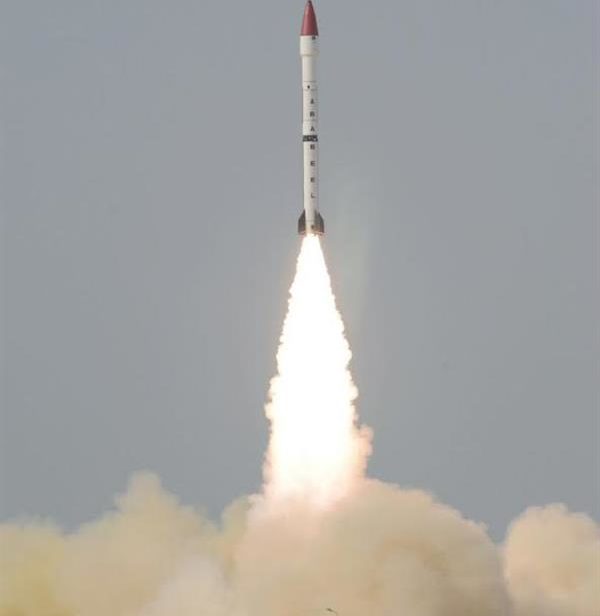
In January, Pakistan claimed to have test-fired a 2,200 km range Ababeel ballistic missile with Multiple Independently-Targetable Re-entry Vehicle (MIRV) capability that would ensure the survivability of its missiles against Indian ballistic missile defenses (BMD). MIRVs are effective at penetrating missile defense systems because they have missile payloads with multiple warheads, making it extremely challenging for missile defenses to destroy all of the incoming missiles. That Pakistan would have worked towards developing MIRVs should come as no surprise, especially as it has already developed tactical nuclear weapons (TNWs), which also require nuclear warhead miniaturization. Rather than simply viewing Pakistan’s development of MIRVs as dangerous, it is important to understand Pakistan’s broader strategic context for developing these weapons systems, especially in terms of strategic stability. In fact, it can be argued that Pakistan’s development of MIRVs serves to stabilize, rather than destabilize, the nuclear relationship between India and Pakistan.
Pakistan’s MIRV Posturing: The Rationale
Though undeclared, it is generally assumed that Pakistan has adopted a first-use policy in its nuclear doctrine, which is the perceived willingness to use nuclear weapons first in a conflict as a tool of deterrence. A state adopting a first-use policy would need to ensure that it has built weapon systems that are capable of being launched first and certain to reach the intended target. However, an adversary could undermine the credibility of this first-use capability if it were to develop effective countermeasures, such as sophisticated missile defenses, that could greatly reduce the intended effectiveness of a nuclear attack.
With this strategic background in mind, Pakistan could be concerned that India could conduct a conventional and/or nuclear strike against Pakistan and then use its missile defenses to prevent Pakistani nuclear retaliation. India’s effort to develop MIRV technology on its Agni-V category missile system is likely to further undermine Pakistani trust in India’s no-first-use policy because MIRVs are considered non-defensive, first strike weapon systems.
Pakistan’s apprehension about India’s nuclear policy and growing conventional military capabilities has led it to adopt a full spectrum deterrence strategy, the idea that Pakistan requires non-strategic nuclear options in order to credibly deter against a range of potential Indian offensive options. In line with that strategy, Pakistan’s pursuit of more warheads fitted in a ballistic missile is meant to nullify the potential destabilization of the Indian BMD system. To further improve its deterrence capabilities, Pakistan has also worked towards strengthening its second-strike capability by conducting a test-firing of the Babur-III submarine launched cruise missile (SLCM) in January 2017. Furthermore, as noted by nuclear experts Paul Kerr and Mary Nikitin in a recent Congressional Research Service report, Pakistan is “possibly building hard and deeply buried storage and launch facilities” inside which nuclear weapons systems can be protected from destruction by enemy strikes. This arguably means Pakistan is developing a range of nuclear capabilities including an ability to strike India first with its nuclear forces, absorb an Indian counter-strike on its territory, and then launch a second strike against India.
Do MIRVs Destabilize the Region?
Although these developments may seem threatening at first glance, when both India and Pakistan’s nuclear offensive capabilities are on par with each other, there is regional stability. Regional destabilization takes place when there is an offence-offence imbalance, meaning a state’s offensive capability is weaker than that of its adversary. Thus, when both Pakistan and India have MIRV capabilities, the offence-offence balance is strengthened, which reinforces regional stability. The only other option to strengthen regional stability would be for both India and Pakistan to refrain from developing MIRVs and other new offensive capabilities in the first place. However, China’s venture into MIRV capability created a security dilemma in the region and left India with no other option but to develop similar capabilities to counter Chinese capabilities. Likewise, it would invite instability for Pakistan if it opted not to match India.
Similarly, China’s BMD program generated pressure for India to develop an indigenous BMD capability. This alignment of capabilities reinforces regional stability as neither side has a new military advantage to exploit. While Pakistan does not possess a BMD capability at the moment, the counter-measures it is developing, such as MIRVs, to negate the effectiveness of Indian BMDs bolsters the credibility of Pakistan’s nuclear forces. Nonetheless, if Pakistan were to one day develop BMDs, this further matching with Indian capabilities could strengthen strategic stability even more. This credible deterrence would bring a sense of self-assurance to Pakistan regarding its nuclear forces and ensure that both India and Pakistan refrain from the irrational use of nuclear weapons. To express more simply:
Pakistan with MIRV capability + India without MIRV but with BMD capability = Destabilization Pakistan without MIRV capability + India with MIRV and BMD capability = Serious Destabilization Pakistan with MIRV capability + India with MIRV and BMD capability = Stabilization Pakistan with MIRV and BMD capability+ India with MIRV and BMD capability = Strengthened stability |
Conclusion
Although seemingly a threatening development at face value, Pakistan’s MIRV capability strengthens stability in South Asia by undermining any strategic value that Indian BMDs could give for potential military options. Unfortunately, this strategic stability is the optimal outcome for the present considering it is unlikely either state would agree to give up their existing offensive nuclear capabilities.
***
Image: ISPR


